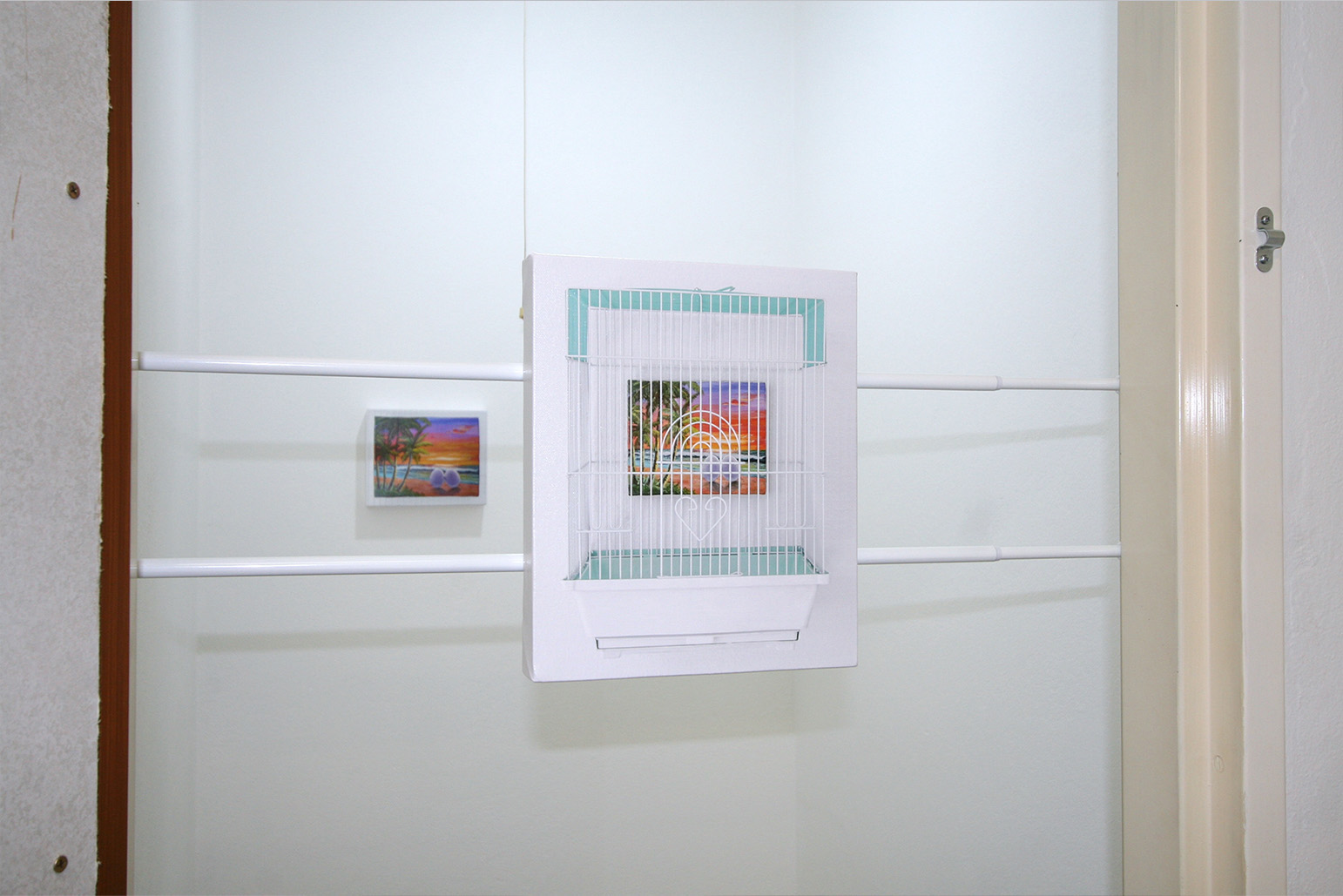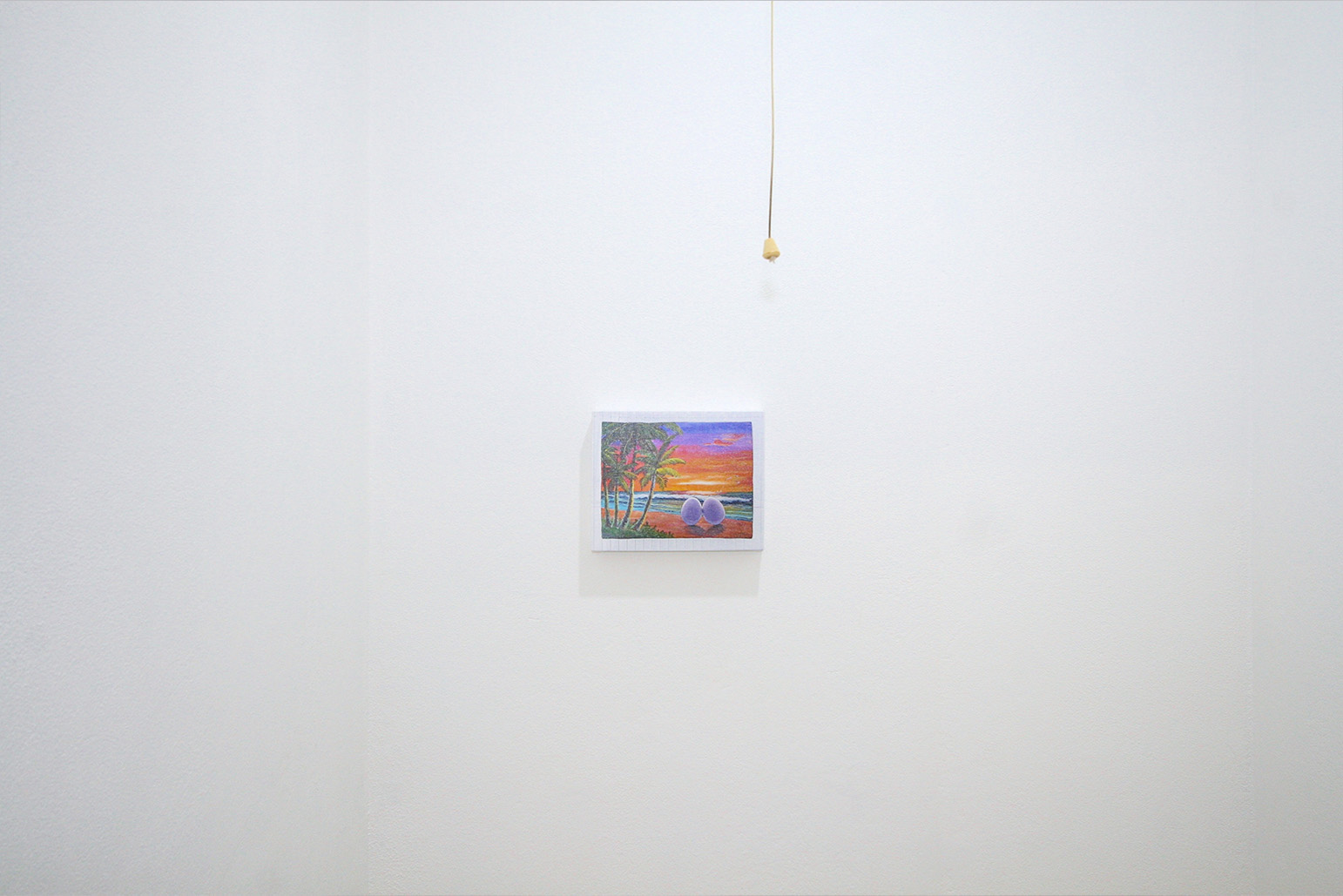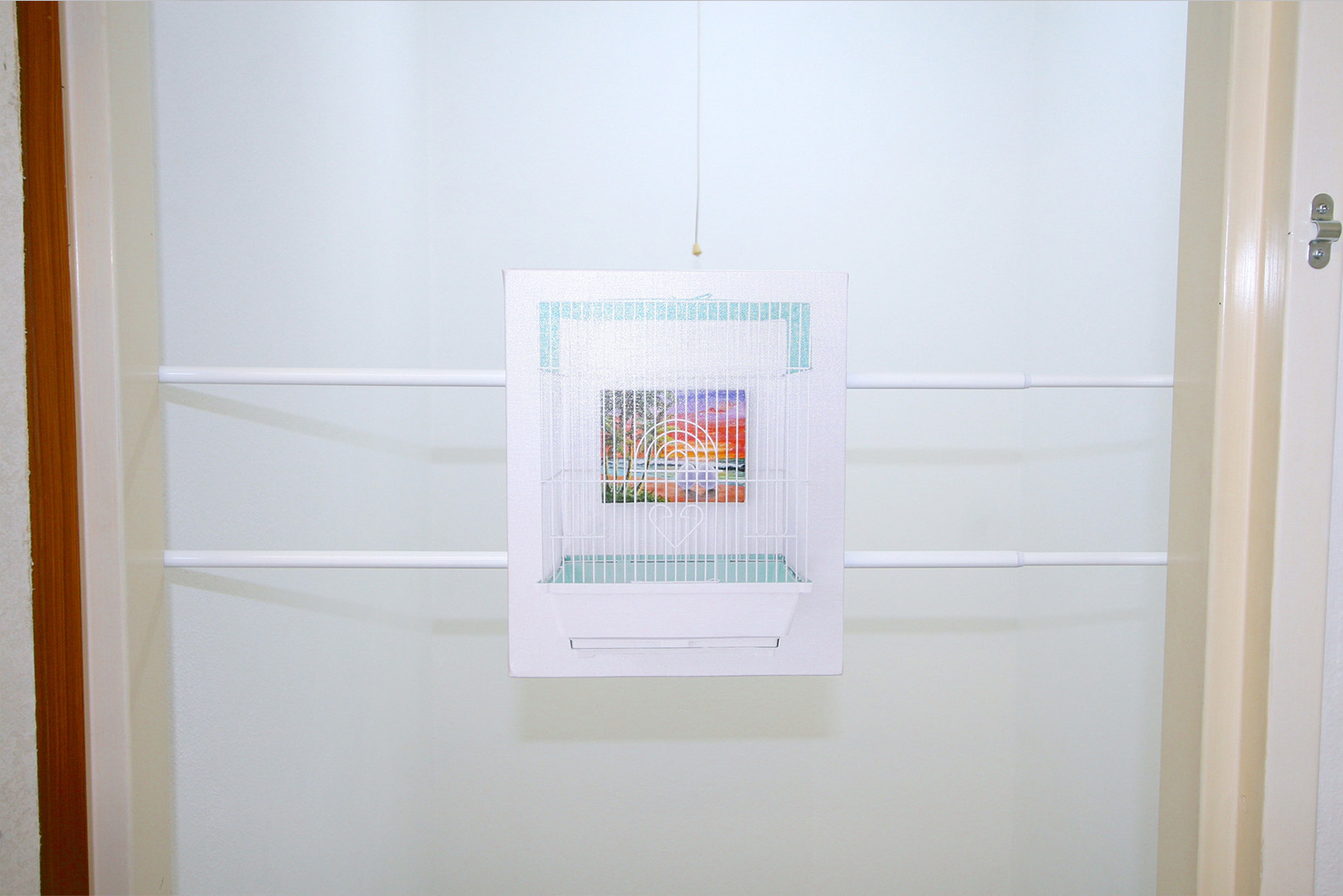


We come then to the subject of forgeries. You are aware that as soon as there are stamp-collections there are forgeries[…]
—Walter Benjamin
Oh god no. I’ve been playing competitively for years, and borrowing cards is one of the best ways to always have the best decks without spending a ton of money. In five years of ptqing and playing in GPs, I probably own my whole deck about 20% of the time. I’ve loaned out whole deck for events on numerous occasions. The trick is getting a reputation for being honest and trustworthy and maintaining it. We have Google docs spreadsheets to keep track of it all. We do it for mtgo too, and it saves everyone hundreds of dollars.
—Reddit post
Bill’s PC, a new contemporary art space in Walyalup run by artist Matt Brown, touts itself as an “artist-run exhibition program with a physical location”.[1] While this seemingly neutral description of management and locale could be interpreted as a formalist rejection of inessential detail, the fact that the existence of a physical location is underlined provides a clear indication that Bill’s PC is part of a new wave of artist-run exhibition programs whose online presence is equally as important as their connection to place. Despite years of failures to invent online environments that could immerse the viewer—with the last twenty years or so producing a litany of embarrassing Second Life style online exhibition spaces—Instagram has potentially perfected the online contemporary art experience by making the digital gallery ubiquitous and somewhat invisible. Put differently, people don’t think they’re in an online gallery when they scroll Instagram, thereby making it the most successful virtual gallery to date.
Bill’s PC’s first show, exhibiting work by the Japanese artist COBRA, speaks directly to these questions by presenting two reproductions of one of COBRA’s Story of eggs (bird gallery for bird) sculptures. According to an interview in im labor, COBRA began producing paintings in rat cages around 2019.[2] These enigmatic works could be read as not-so-subtle digs at the alienating experience of the art fair, presenting paintings of cheese, SpongeBob SquarePants, and Tom and Jerry within various rodent related metal structures. This body of work evolved to become stranger still, including birdcages that showcased eggs in the mannered pose one might expect from holidaying lovers. The little that one can find about COBRA’s intentions points to collecting; quoted in the same interview, COBRA states “I’ve always been an obsessive collector, and I particularly like to collect things that I don’t understand. This sensibility is the thing I value most when it comes to making artwork”.[3] Speaking directly to the circulation of images of artworks throughout the internet, Brown has not reproduced COBRA’s sculptural works but has instead digitally printed documentation of works from the Story of eggs (bird gallery for bird) series on canvas.
Brown, the artist, has engaged primarily with the artefacts of internet fan culture, and recent years have seen him exhibit works inspired by the folk-curatorial practices of hobbyists and pop-culture collectors. The name Bill’s PC is a reference to the original 1990s Pokémon Gameboy series, in which the player’s capacity to store and trade Pokémon is facilitated by an in-game storage system developed by the titular Bill. Brown, then, like COBRA, has an interest in collecting, and, importantly, modes of collecting that are irreducible to the financial logics of the artwork-as-asset. As such, one could argue that works from Story of eggs (bird gallery for bird) have been printed on canvas, not to become paintings, but to become shareable, to enter into the gallery scene qua trading card culture. Perhaps I’m drawing a long bow, but the curatorial practices of the hobbyist or pop-culture collector are potentially more germane to understanding a space like Bill’s PC, and the production of works like those of COBRA, than the conventions of the artworld. It is arguable that the loaning of artworks between these physically small and yet internationally networked exhibition programs is closer to the act of friends loaning each other cards when playing collectible games like Pokémon, Yu-Gi-Oh!, or Magic the Gathering. Indeed, the trading of documentation between spaces and online platforms such as Contemporary Art Daily potentially evinces aspects of this same culture.[4] On the one hand, this isn’t so strange or unique, since curators help to valorise artworks through those acts of care bound up with the etymological origins of the term. On the other hand, curatorship is also meant to assist in the becoming-meaningful of the artwork, and it is not yet clear to me how these curatorial practices of displaying, loaning, and trading are to be understood. Which is not to say that meaning or interpretation is secondary when it comes to spaces like Bill’s PC, but to instead pose the possibility of other aesthetic grammars—alternate ways of engaging with art are do not limit the artwork to providing an “experience” or a critical message.
Sadly, these possibilities are not addressable in a short piece of criticism. Even so, Bill’s PC is already a compelling project, and, with an upcoming show by Nihaal Faizal, it appears that addressing these aforementioned concerns is already a key part of Brown’s curatorial vision.[5] While embracing the cryptic and obscure qualities of Art with a capital A, I was struck by the Bill’s PC’s vernacular sensibility, and, for this reason, it is exciting to see another art space in Boorloo that is unashamedly for artists, critics, and curators, and yet simultaneously egalitarian.
COBRA, Story of eggs (bird gallery for bird), 2 Sep – 23 Sep 2023, Bill’s PC.
1. https://bills-pc.net/info
2. https://imlabor.org/journal/interview/007/
3. https://imlabor.org/journal/interview/007/
4. https://www.contemporaryartdaily.com/project/cobra-at-bill-s-pc-western-australia-29549
5. https://bills-pc.net/box-2
Artwork credit: COBRA, Story of eggs ( bird gallery for bird, 2019, bird cage , acrylic on canvas, 21cm x 30cm x 39cm, 18cm x 14cm.
—Walter Benjamin
Oh god no. I’ve been playing competitively for years, and borrowing cards is one of the best ways to always have the best decks without spending a ton of money. In five years of ptqing and playing in GPs, I probably own my whole deck about 20% of the time. I’ve loaned out whole deck for events on numerous occasions. The trick is getting a reputation for being honest and trustworthy and maintaining it. We have Google docs spreadsheets to keep track of it all. We do it for mtgo too, and it saves everyone hundreds of dollars.
—Reddit post
Bill’s PC, a new contemporary art space in Walyalup run by artist Matt Brown, touts itself as an “artist-run exhibition program with a physical location”.[1] While this seemingly neutral description of management and locale could be interpreted as a formalist rejection of inessential detail, the fact that the existence of a physical location is underlined provides a clear indication that Bill’s PC is part of a new wave of artist-run exhibition programs whose online presence is equally as important as their connection to place. Despite years of failures to invent online environments that could immerse the viewer—with the last twenty years or so producing a litany of embarrassing Second Life style online exhibition spaces—Instagram has potentially perfected the online contemporary art experience by making the digital gallery ubiquitous and somewhat invisible. Put differently, people don’t think they’re in an online gallery when they scroll Instagram, thereby making it the most successful virtual gallery to date.
Bill’s PC’s first show, exhibiting work by the Japanese artist COBRA, speaks directly to these questions by presenting two reproductions of one of COBRA’s Story of eggs (bird gallery for bird) sculptures. According to an interview in im labor, COBRA began producing paintings in rat cages around 2019.[2] These enigmatic works could be read as not-so-subtle digs at the alienating experience of the art fair, presenting paintings of cheese, SpongeBob SquarePants, and Tom and Jerry within various rodent related metal structures. This body of work evolved to become stranger still, including birdcages that showcased eggs in the mannered pose one might expect from holidaying lovers. The little that one can find about COBRA’s intentions points to collecting; quoted in the same interview, COBRA states “I’ve always been an obsessive collector, and I particularly like to collect things that I don’t understand. This sensibility is the thing I value most when it comes to making artwork”.[3] Speaking directly to the circulation of images of artworks throughout the internet, Brown has not reproduced COBRA’s sculptural works but has instead digitally printed documentation of works from the Story of eggs (bird gallery for bird) series on canvas.
Brown, the artist, has engaged primarily with the artefacts of internet fan culture, and recent years have seen him exhibit works inspired by the folk-curatorial practices of hobbyists and pop-culture collectors. The name Bill’s PC is a reference to the original 1990s Pokémon Gameboy series, in which the player’s capacity to store and trade Pokémon is facilitated by an in-game storage system developed by the titular Bill. Brown, then, like COBRA, has an interest in collecting, and, importantly, modes of collecting that are irreducible to the financial logics of the artwork-as-asset. As such, one could argue that works from Story of eggs (bird gallery for bird) have been printed on canvas, not to become paintings, but to become shareable, to enter into the gallery scene qua trading card culture. Perhaps I’m drawing a long bow, but the curatorial practices of the hobbyist or pop-culture collector are potentially more germane to understanding a space like Bill’s PC, and the production of works like those of COBRA, than the conventions of the artworld. It is arguable that the loaning of artworks between these physically small and yet internationally networked exhibition programs is closer to the act of friends loaning each other cards when playing collectible games like Pokémon, Yu-Gi-Oh!, or Magic the Gathering. Indeed, the trading of documentation between spaces and online platforms such as Contemporary Art Daily potentially evinces aspects of this same culture.[4] On the one hand, this isn’t so strange or unique, since curators help to valorise artworks through those acts of care bound up with the etymological origins of the term. On the other hand, curatorship is also meant to assist in the becoming-meaningful of the artwork, and it is not yet clear to me how these curatorial practices of displaying, loaning, and trading are to be understood. Which is not to say that meaning or interpretation is secondary when it comes to spaces like Bill’s PC, but to instead pose the possibility of other aesthetic grammars—alternate ways of engaging with art are do not limit the artwork to providing an “experience” or a critical message.
Sadly, these possibilities are not addressable in a short piece of criticism. Even so, Bill’s PC is already a compelling project, and, with an upcoming show by Nihaal Faizal, it appears that addressing these aforementioned concerns is already a key part of Brown’s curatorial vision.[5] While embracing the cryptic and obscure qualities of Art with a capital A, I was struck by the Bill’s PC’s vernacular sensibility, and, for this reason, it is exciting to see another art space in Boorloo that is unashamedly for artists, critics, and curators, and yet simultaneously egalitarian.
COBRA, Story of eggs (bird gallery for bird), 2 Sep – 23 Sep 2023, Bill’s PC.
1. https://bills-pc.net/info
2. https://imlabor.org/journal/interview/007/
3. https://imlabor.org/journal/interview/007/
4. https://www.contemporaryartdaily.com/project/cobra-at-bill-s-pc-western-australia-29549
5. https://bills-pc.net/box-2
Artwork credit: COBRA, Story of eggs ( bird gallery for bird, 2019, bird cage , acrylic on canvas, 21cm x 30cm x 39cm, 18cm x 14cm.
